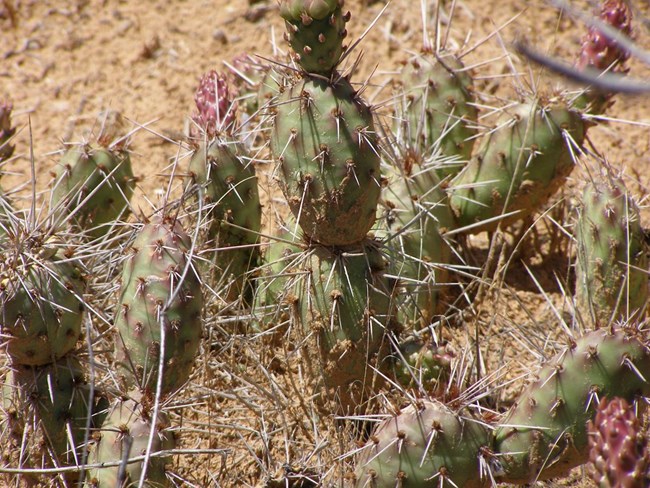Last updated: March 3, 2022
Article
Prickly Pear Cactus

The members of the Lewis and Clark Expedition often wrote about their painful encounters with the prickly pear cactus. But the plant’s long, needlelike thorns are nature’s way of providing a little protection from a long-list of hungry and thirsty critters.
In spite of the sharp needles, several animals eat the prickly pear. These animals have anatomical and physiological features that enable them to consume it with no side effects or harm, including jackrabbits, prairie dogs, javelinas, rodents, bats, iguana, and coyotes.
Humans have also learned that the fruit and pads are considered by nutritionists as “superfoods,” according to the University of Nevada, Reno. Want to give prickly pear a try? Read this how-to article from the university: https://extension.unr.edu/publication.aspx?PubID=2157.
Native to the Western hemisphere, the prickly pear cactus is the only member in the Opuntia genus of cacti, but there are over 200 different species within the genus.
Photo: The potato prickly pear, one of hundreds that thrive throughout the Western Hemisphere. NPS.
Alt Text: A close-up photograph of the potato prickly pear. The green pads are more oval/round shaped than many other species. Each pad is covered with long, white, sharp thorns. Red fruit/flower buds can be seen on the top edges of several pads.
